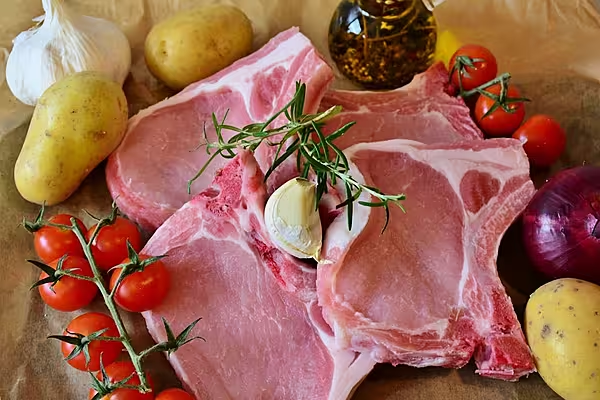China's state planner said on Monday that central and local governments will start buying pork for state reserves to support prices, even after prices rebounded sharply from a two-year low last week.
The move comes after live hog prices in the world's top pork producer plunged 65% from January to early June as outbreaks of disease triggered panic selling, and as a glut of large pigs were sent to slaughter.
Falling prices eroded profits for farmers and raised concerns that many would stop farming, triggering shortages later on.
'Excessive Decline'
Average weekly prices entered an "excessive decline" last week, the National Development and Reform Commission (NDRC) said in a notice on its official WeChat account.
And the hog-to-grain price ratio, an indicator of farmer profits, hit 4.9:1 on average last week, breaching the 5:1 level set by the NDRC to trigger a level 1 warning, its highest.
Shares in China's hog farming companies jumped on the stockpile purchasing plan, even though hog prices have surged in recent days.
Live hog prices bottomed out at 12.9 yuan ($2.00) per kilogram on 21 June and hit 17.35 yuan per kg on Monday, according to Shanghai JC Intelligence Co Ltd, as fewer overweight hogs were sent to slaughter.
Beijing does not disclose how much pork it holds in reserves and the NDRC did not provide details on volumes to be purchased.
It last bought from the market in February and March 2019, when it made three purchases totalling 200,000 tonnes.
'Frozen Pork Inventory'
"Since the frozen pork inventory is probably already high due to strong imports in the previous months, I don't think they'll buy too much," said Pan Chenjun, senior analyst at Rabobank.
"I don't think there's much space to store it."
China has imported almost 2 million tonnes of pork in the first five months of 2021, up 13.7% on the year, after bringing in a record 4.4 million tonnes last year.
China's first-quarter pork production rose 31.9% from a year earlier to 13.69 million tonnes, data showed on Friday, the highest quarterly volume in two years.






